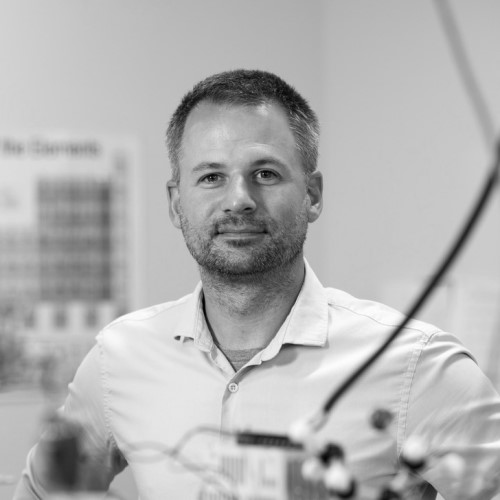-

Dr. Tarek Echekki
Professor, North Carolina State University
Data-Based Modeling in Turbulent Combustion: Progress, Challenges and Opportunities
Data has played a central role in the development and refinement of turbulent combustion models, primarily through model validation. This data also has provided important insight into strategies to tackle challenges of closure, including the separation of scales or the adoption of low-dimensional manifolds. With the increasing availability of high fidelity of simulation and experimental data, additional opportunities have arisen. These opportunities are related to the construction of turbulent combustion models starting from data. In this talk, some progress on data-based modeling in turbulent combustion is presented. The effort is based on abstracting information from data through the identification of a data-based low-dimensional manifolds. Transport equations and their closure based on the variables characterizing these manifolds are developed and solved. The models are illustrated for the case of data consisting of experimental multiscalar measurements in flames. Data from such measurements is “partial”, since not all species needed for a full account of the chemistry are measured. Strategies to “recover” missing information are needed. Moreover, despite the high quality of the data, minor measurement uncertainty can translate into much higher error in determining reaction rates. Additional challenges associated with the development of robust data-based closure models are identified. The challenges offer unique opportunities for research that invariably rely on insight into the physics, simulation and the development and implementation of physics-informed and physics-constrained machine learning tools.
-

Dr. Jay Kapat
Pegasus Professor and Trustee Chair , University of Central Florida
Research at CATER on Sustainable Energy Systems
Florida has a large conglomeration of power generation and related companies. US headquarter of Siemens Energy and Americas headquarter of Mitsubishi Power are both located in Orlando. US headquarters of both Hanwha / Power Systems Manufacturing and Doosan are also located in Florida. Raytheon / Pratt & Whitney and Aerojet Rocketdyne also have large engineering operations related to turbine engines in Florida. In order to “serve” all these OEM’s, and many of their suppliers and support companies, the Center for Advanced Turbomachinery & Energy Research (CATER) was started at UCF in 2012. CATER currently has 11 tenured or tenure-track faculty, 12 research faculty or postdoctoral research staff and more than 150 research students.
There are 6 current, active initiatives at CATER, in response to mega trends in related fields that are also synergistic with needs for Florida companies. Two of these initiatives are on low carbon technologies and supercritical carbon dioxide (sCO2) power cycles, which are directly related to sustainable energy systems. sCO2 systems, based on Brayton cycle or on variations of it, are quite versatile in applications. sCO2 cycles can be operated in closed loop, where heat from concentrated solar receivers or from nuclear plants or waste heat from cement or steel plants can be converted to electricity. The semi-closed or direct-fired version of sCO2 systems can use oxy-combustion of natural gas with automatic carbon capture.
Under low carbon technologies, various uses or storage of hydrogen and/or ammonia are being investigated. In one of the recently awarded NASA projects, CATER researchers and their collaborators from around the nation will look into use of ammonia as a hydrogen carrier for zero emission aviation. The target application is commercial flight. Ammonia stored onboard at -33C will not require any special refrigeration or cryo-cooling at cruising altitude, and will also be used to enhance core performance by providing compressor intercooling and cooled cooling air for turbines. Hydrogen is derived from ammonia through catalytic decomposition to help in thermal management, leading to significantly improved engine efficiency. A fraction of onboard ammonia is also used to eliminate NOx from the exhaust stream. A closed-loop sCO2 power system is used to produce electricity from engine exhaust heat for onboard use and to eliminate power extraction from the core. Hydrogen combustion leads to the absence of soot in exhaust, greatly reducing contrail formation. The proposed technology nearly eliminates every form of emission.
-

Dr. Amy Mensch
Mechanical Engineer at Engineered Fire Safety Group, National Institute of Standards and Technology
Production, Transport and Deposition of Smoke in Fire Research
This presentation is an overview of methods used for predicting and measuring smoke (soot and smolder smoke) emitted from fires. Understanding smoke dynamics, including generation, coagulation, transport, and deposition, is key to improving life safety predictions, such as smoke visibility and smoke detector activation, and important in applications such as fire forensics and mitigating the release of hazardous materials. In fire modeling tools, such as NIST’s Fire Dynamics Simulator (FDS), sub-models have been implemented for general aerosol transport, deposition, and coagulation, but their usefulness may be limited in practice. Users must specify the fire’s smoke yield and particle size(s), and the most appropriate size for fractal-shaped soot particles varies depending on the coagulation or deposition phenomena of interest. Our research group has been working to validate computational models for thermophoretic deposition, gravitational settling, aging (coagulation), and turbulent deposition. We have designed experiments to isolate transport mechanisms, employed state-of-the-art particle measurement methods and developed new methods to quantify soot deposition, and compared the measurements to FDS predictions. Future work in model validation is still needed, especially in the areas of soot coagulation and turbulent deposition, to improve overall predictions of the fate of smoke from fires.
-

Dr. Brandon Rotavera
Assistant Professor, University of Georgia
The Importance of Reaction Mechanisms in Combustion
Despite accelerating electrification efforts, the United States Energy Information Agency projects that, for the foreseeable future, liquid hydrocarbons and biofuels will continue to provide greater than 95% of transportation energy needs through 2050. Moreover, outside of the U.S., the European Union has set a target of 27% for renewable energy in the transportation sector, as proposed in the 2030 Framework for Climate and Energy, which is stated to be met only by partially or completely replacing fossil fuels with biofuels. Building on the global recognition that combustion-derived energy will remain critical to the transportation sector, continued development of advanced combustion technologies plays a meaningful role in sustainably meeting rising energy demands and also in the mitigation of air quality and climate impacts.
Underpinning this effort is the need to understand fundamental chemistry and physics of fuel-engine interactions for the purpose of enabling predictive modeling capabilities to accelerate the pace of new technology creation. As one major example, advanced compression-ignition strategies offer a means for achieving low-emission, high-efficiency combustion. These strategies, which include gasoline direct-injection, among others, rely extensively on predictive chemical kinetics of hydrocarbons and biofuels. Accordingly, understanding fundamental reaction mechanisms of classes of molecules such as n-alkanes, cycloalkanes, and oxygenated hydrocarbons remains essential.
Results from several recent studies on hydrocarbon and biofuel oxidation mechanisms are discussed in the context of two primary topics: ignition and pollutant formation. Examples include understanding the balance of products that form from hydroperoxy-substituted carbon-centered radicals (Q̇OOH) as a function of with O2 concentration, analysis of stereochemical effects on cyclic ether reactions for the purpose of minimizing mechanism truncation error, and a recent discovery that shows a connection between the formation of organic aerosol within the low-temperature combustion region that arises from peroxy radical-mediated chemical kinetics. The results are followed with a perspective on some research questions that support continued progress on sustainable energy and on the importance of reaction mechanisms in combustion.
